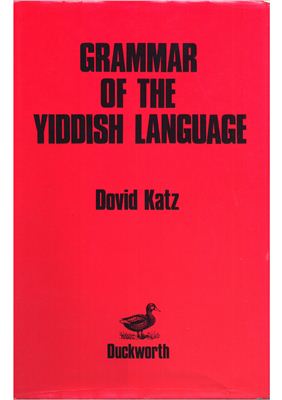Katz D. Grammar of the Yiddish Language. - Redwoodbu Ltd. , 1987.
- 290p.
The Grammar was prepared with a dual readership in mind. The first intended users are university students enrolled in Yiddish language courses Ideally, the qualified teacher will converse extensively in Yiddish from a very early stage of the course while supplying genuine literary tests. Lessons can be chosen as necessary from various sections to suit the requirements of the course. In place of 'fill in the blanks' exercises, it is recommended that students be asked to write original sentences and compositions on the basis of a selected section. The dictionaries recommended for use alongside the Grammar are Bergman's at an elementary stage; Weinreich's at a more advanced stage; and Harkavy's at a still more advanced stage at which the student is reading from works of Yiddish literature on his or her own (see 'Dictionaries', p. 277). Reading may be culled from any of a number of anthologies or readers (see 'Anthologies', pp. 273-279), of better still, from original works of mode Yiddish masters selected by the instructor
The second intended user is the more advanced student or general reader who requires a reference grammar either to help master the language or as a work to be consulted as necessary
The Grammar was prepared with a dual readership in mind. The first intended users are university students enrolled in Yiddish language courses Ideally, the qualified teacher will converse extensively in Yiddish from a very early stage of the course while supplying genuine literary tests. Lessons can be chosen as necessary from various sections to suit the requirements of the course. In place of 'fill in the blanks' exercises, it is recommended that students be asked to write original sentences and compositions on the basis of a selected section. The dictionaries recommended for use alongside the Grammar are Bergman's at an elementary stage; Weinreich's at a more advanced stage; and Harkavy's at a still more advanced stage at which the student is reading from works of Yiddish literature on his or her own (see 'Dictionaries', p. 277). Reading may be culled from any of a number of anthologies or readers (see 'Anthologies', pp. 273-279), of better still, from original works of mode Yiddish masters selected by the instructor
The second intended user is the more advanced student or general reader who requires a reference grammar either to help master the language or as a work to be consulted as necessary

